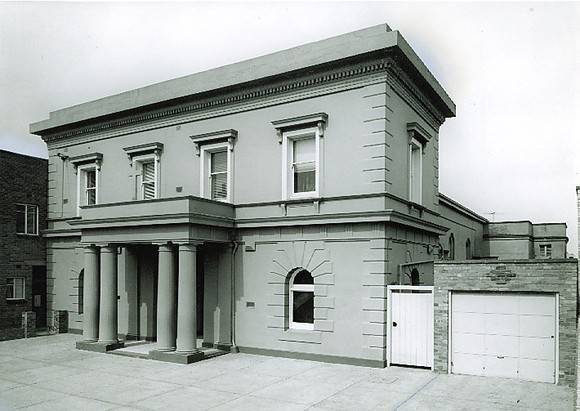| Back to search results » | Back to search page » |
|
St Andrew's Presbyterian Church (Former)
Other NameSt. John's Lutheran Church Location165 Yarra Street, GEELONG VIC 3220 - Property No B1063
File NumberB1063LevelState |
|
Statement of Significance
The former St Andrews Presbyterian Church, Yarra Street, Geelong was designed by the architect/surveyor Alexander J Skene and erected in 1841/42. The building was simple, Georgian in style and rectangular in plan, with a hipped roof and a small entry porch facing Yarra Street. Polished freestone sills were used at the doors and windows but the walls were constructed of locally manufactured bricks. Other materials, including some of the roofing shingles and plaster for the ceiling, were imported from Hobart. The original plans and other documentation from 1838 onwards survive. Skene was the first architect/surveyor to practice in Geelong, and later became Victoria's surveyor-general from 1869-86.
Dr Alexander Thomson (1800-1866), medical practitioner and pastoralist, who became Geelong's first mayor in 1851 (and served again 1855-57) was treasurer of the church during its construction and laid the foundation-stone. He has been described sometimes as Geelong's founder.
In c1912, the church was purchased by a local Geelong Scottish Society, the Comunn Na Feinne, which remodelled the structure as a hall for meetings and various entertainments. The society was formed in 1856, dedicated to the 'cultivation of the Gaelic language and highland nationality, morality, philanthropy, archaeology and whatever may interest or instruct'. The original building survives but is now hidden behind a two storey rendered classical style front added in 1912-13 to the design of notable Geelong architects Laird & Buchan. The porch was removed, and there were also some internal alterations and the brick exterior of the 1841/42 building was rendered.
In the 1970s, the site reverted to use as a church for a Lutheran congregation.
How is it significant?
The former St. Andrews Presbyterian Church is significant for architectural and historic reasons at the State level.
Why is it significant?
The 1841/42 building is historically significant as one of the earliest surviving churches in Victoria, and the oldest surviving Presbyterian church in the state. It is also the oldest surviving masonry structure in the Geelong region and the earliest documented work of Alexander J Skene.
The early church structure also has historical associations with a number of Geelong pioneers, particularly Dr Alexander Thomson (1800-1866), Geelong's first mayor, who has been described as Geelong's founder.
The building and its additions are historically notable as the home from 1912 of the Comunn Na Feinne Society, popular among Geelong Scots up until WWII.
The original building is architecturally important as a rare example of Colonial Georgian in Victoria, featuring a typically simple hipped roofed rectangular form.
The 1912/13 facade is notable as an unusually late example of Renaissance Revival with a distinctive Doric porch.
EXTENT:
The original 1841/42 building, and the additions to front and rear of 1912/13.
Classified: State 04/08/2005
Group
Religion
Category
Church




